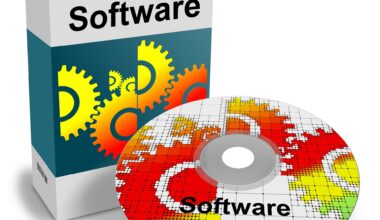In 2025, AI isn’t just a buzzword—it’s woven into the apps we use every day. From writing emails to editing photos, managing schedules to learning new skills, artificial intelligence is transforming routine tasks into smarter, faster, and more personalized experiences. Whether you’re a student, a professional, or someone who wants to get more done with less effort, AI-powered software is changing how daily tools behave—and raising expectations of what software can do.
Let’s explore how AI has begun reshaping everyday applications, what tools are leading the way, and how you can make them work for you.
How AI Is Changing Everyday Software
Here are the major shifts happening now:
-
Personalization at Scale
Apps are increasingly able to learn your behavior and adapt accordingly. For example, language learning apps like Duolingo tailor lessons not only by topic but also by how well you retain material, your pace, and your preferred learning style. -
Smart Writing & Communication Tools
Writing apps are going beyond spell-checks. Tools like GrammarlyGO offer suggestions for tone, style, and clarity and even generate content based on prompts. It’s no longer just correcting mistakes—it’s helping you become a better writer. -
Automation & Productivity Enhancements
Routine tasks are being automated. Voice-to-text, meeting transcription, and summarizing long articles—these features save time and reduce repetitive work. Apps like Otter.ai lead in converting speech to searchable notes. -
Generative AI for Creativity
Whether you need design ideas, visuals, or content outlines, generative AI tools are making creative work more accessible. Applications like Copy.ai or Canva AI help generate visuals, copy, or design elements with minimal input. -
Smarter Search & AI Agents
Search is becoming more conversational and intelligent. Rather than just listing links, apps like Perplexity AI or features like Google’s “Gemini” extensions allow you to ask complex questions (“Plan my week,” “Show me comparison reports”) and get structured, useful responses.
Top AI-Powered Apps That Are Changing the Game
Here are some standout applications in 2025 that are already making a difference:
| App | What It Does Differently | Best For… |
|---|---|---|
| Notion AI | Turns notes and tasks into smart summaries, suggests improvements, and helps organize workflows. | Students, creators, and anyone wanting more organization. |
| GrammarlyGO | More than grammar: tone adjustment, rewriting content, and context-aware suggestions. | Professionals, content writers, and students. |
| Otter.ai | Real-time transcription, meeting summarization, and identification of key moments. | Remote workers, students, and interviewers. |
| Duolingo | Uses AI to adjust lesson difficulty, personalize practice, and support language learning with feedback. | Language learners at all levels. |
| Copy.ai | Helps generate marketing content, social media posts, and blog outlines—fast and creative. | Marketers, small business owners, and content creators. |
| Wispr Flow | Provides high-quality speech-to-text and transcription across devices, with improvements in accuracy and language coverage. | Podcasters, journalists, and people in meetings. |
✅ Pros
-
Time savings: AI can take over tedious tasks like summarizing, drafting, or converting voice to text.
-
Better quality output: From clearer writing to more polished visuals, AI helps even non-experts produce high-quality work.
-
Personalization: The more you use apps, the more they adapt—helping reduce friction in workflows.
-
Creativity boost: Generative features can spark ideas, help overcome writer’s block, or assist with visuals.
⚠️ Drawbacks
-
Privacy concerns: AI tools often process user data; how and where that data is stored or used can matter.
-
Over-reliance: Relying too much on suggestions or auto-generated content can reduce learning, originality, or authenticity.
-
Cost concerns: Many free AI tools have limits; premium tiers unlock advanced features.
-
Quality issues: Sometimes AI gets wrong answers, or formatting and style can feel generic; human editing is still needed.
How to Make AI-Powered Apps Work For You
Here are tips to get the best results:
-
Start with free versions to test features and workflows.
-
Use them to complement—not replace—your own thinking; always review AI output.
-
Be mindful of privacy settings; read how your data is used.
-
Choose apps that integrate well with other tools you use (e.g., calendar, cloud storage, collaboration platforms).
-
Keep learning—with new AI features coming fast, staying current helps.
The Future: Where AI in Everyday Software Is Heading
-
More multimodal experiences (text, voice, and image/video input all in one).
-
Smarter agentic tools: small AI agents that can perform multi-step tasks automatically.
-
Better on-device AI for privacy, speed, and reduced dependence on the cloud.
-
More ethics, regulation, and transparency in how AI handles personal data.
Final Thoughts
AI-powered software has already changed many apps from being simple tools into intelligent assistants. For 2025, the shift is clear: convenience, personalization, and automation are not just features—they’re becoming the expected norm.
If you embrace them properly, these tools can boost productivity, creativity, and even peace of mind. Just pick wisely, stay aware of tradeoffs, and let AI augment your capabilities—rather than replace them.










